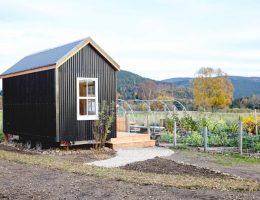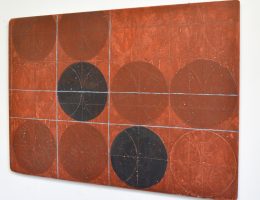Chloe Bullock creates sustainable, healthy and vegan interior design. Here she shares five strategies we can adopt right now to be more planet friendly.
Never remove fire labels – Without a fire label an item of furniture cannot be resold by reselling organisations so therefore goes to landfill. These organisations are often charities, such as British Heart Foundation who, by the way, will collect any of your client’s unwanted furniture and resell.
The sewn-in fire label will be in an out of the way place and you shouldn’t need to remove it. Yearly we throw away 1.6 million tonnes of bulky waste. If you combine the percentages for furniture and bulk textiles (such as mattresses) it’s over 60%! A huge 51% of this is either instantly reusable or reusable with a slight repair – providing it has that fire label. In a study by WRAP and RSA they found this was the reason 800,000 tonnes of good furniture was ending up in land-fill each year
Pause – At the beginning of a project. Evaluate with your client what is already present in the space you are redesigning. Does the floor really need replacing? Are there items of furniture or lighting that could be reused?
Reduce new materials – Can you see the beauty of unfinished plaster? Could you use a timber plank or tile so it is parallel rather than at an angle – saving lots of wastage. Can you carefully calculate the amount of materials needed so there isn’t waste? Could you use materials that are reclaimed, or ‘shop’ other rooms for furniture and decorative items to reuse?
Sustainable timber – When buying paper products including wallpaper, timber or furniture look for the FSC and PEFC certifications which ensure the forests used are well managed and replanted. Many furniture suppliers are still using timber from unverified sources – which could mean illegal logging with no replanting scheme, removal of natural animal habitats and poor working conditions.
It’s a simple question to ask suppliers and they should be ready with their answer. The act of more of us asking will put pressure on suppliers to source more carefully.
Cradle to cradle – For me this is the certification to look out for because it covers all aspects of sustainability – chemicals (harming humans or environment), designed with the next use in mind, clean powered manufacturing that doesn’t pollute air or water, protection of water and soil, social fairness in the supply chain. They have a growing free digital directory of C2C certified products.
Chloe is a member of the BIID, she worked on the Institutes Sustainable Specifying Guide and she is a founding member of Interior Design Declares You can find out more about her company Materialise Interiors here



